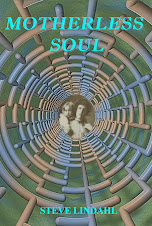 The Shadow Queen by Sandra Gulland
The Shadow Queen by Sandra GullandMy rating: 4 of 5 stars
The Shadow Queen starts out as a tale of seventeenth century French theater, with a plot that follows the life of Claudette des Oeillets, a child of actors. Claudette's family is suffering through hard times and is forced to live in a campsite they've set up near a cave. They finally get a break, an opportunity to perform for Gabriel de Rochechouart de Mortemart, the Duke of Mortemart. Because Claudette's mother once had a minor role in a production of Le Cid by Corneille, they are to perform that work. They have, however, a very limited cast, just Claudette and her parents. The performance naturally has its issues, but it is here that Claudette meets Athénaïs de Montespan, the novel's title character and here that the novel really gets going.
This is a story of both the seventeenth century French court and of seventeenth century French Theater. There are famous characters like Corneille, Moliere, Racine, Louis the XIV (The Sun King), and, of course, The Shadow Queen - Athénaïs de Montespan. Claudette is also a real, historic figure. The strength of this novel is the depth of character Sandra Gulland shows in Claudette. The book is from her point of view, so everything we know about everyone else is filtered through Claudette's perspective. Gulland has chosen to make her a sympathetic character, which may or may not be true, but works great in the book.
This is a fun read, although it starts a little slow. I recommend it to anyone who enjoys French history.
Steve Lindahl – author of Hopatcong Vision Quest, White Horse Regressions, and Motherless Soul
View all my reviews








